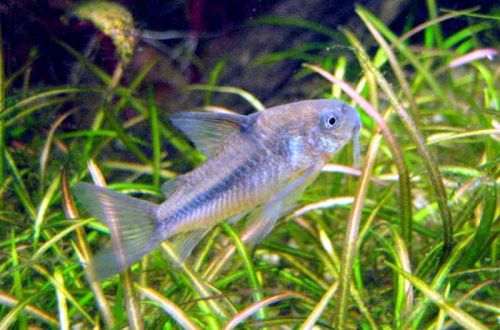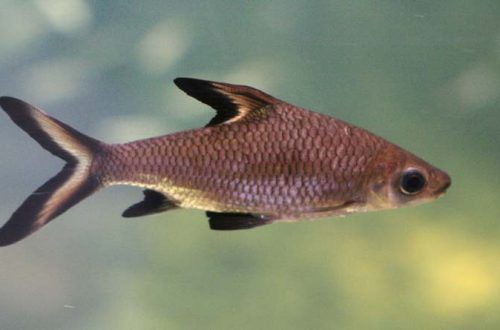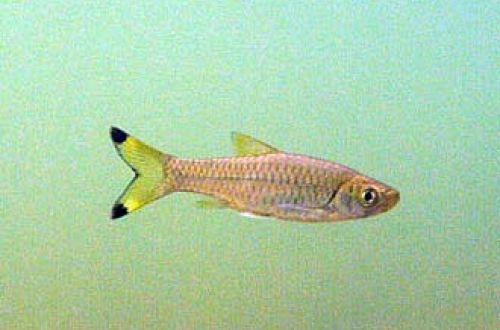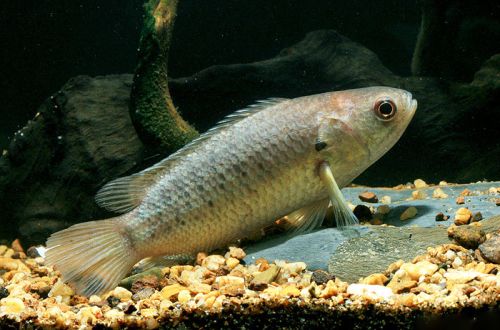
blue measles
The catfish Nutter or Blue measles, the scientific name Corydoras nattereri, belongs to the family Callichthyidae (Shell or Callicht catfish). Native to South America. The natural habitat is limited to the coastal basins of river systems in the southeast of Brazil, the states of Espirito Santo, Rio de Janeiro, Sao Paulo and Parana. Inhabits small streams, rivers, periodically flooded areas of the tropical forest.

Description
Adult individuals reach a length of about 5 cm. The fish has a stocky body typical of Corydoras, covered with rows of bone plates. The coloration is light gray with a pattern of a wide black stripe stretching from the tail to the middle of the body. Depending on the angle of incidence of light, the bone plates may cast a greenish or blue color.
Behavior and Compatibility
Peace-loving calm fish that spend most of the time either hiding or exploring the bottom of the aquarium. They are most active in the evening hours and/or in low light conditions.
Gets along with many non-aggressive fish of comparable size. However, unlike most other Corydoras, the Nutter catfish prefers relatively cold water temperatures, which markedly limits the number of compatible species.
Brief information:
- The volume of the aquarium – from 50 liters.
- Temperature – 20-23°C
- Value pH — 6.0–8.0
- Water hardness – 2–25 dKH
- Substrate type – any soft
- Lighting – subdued or moderate
- Brackish water – no
- Water movement – light or moderate
- The size of the fish is about 5 cm.
- Food – any sinking food
- Temperament – peaceful calm fish
- Keeping in a group of 3-4 individuals
Maintenance and care, arrangement of the aquarium
The optimal size of the aquarium for a group of 3-4 catfish starts from 40-50 liters. In the design, it is recommended to use dark soft substrates and provide several shelters from thickets of plants, snags, pieces of bark, leaves of some trees and other natural materials. The lighting is subdued, but this is not a prerequisite.
As noted above, high temperatures should not be allowed during maintenance. Otherwise, Blue measles is unpretentious and successfully adapts to a wide range of values of the main hydrochemical parameters (pH and dGH).





